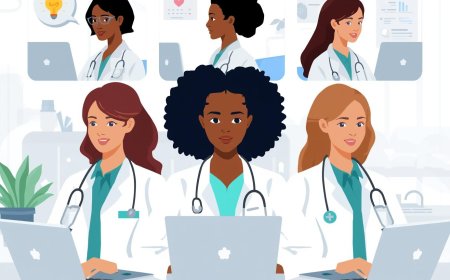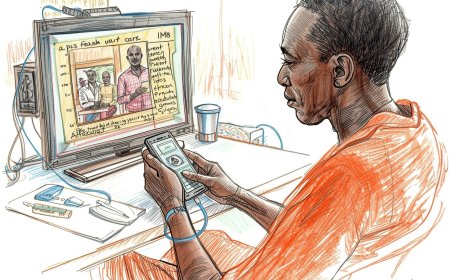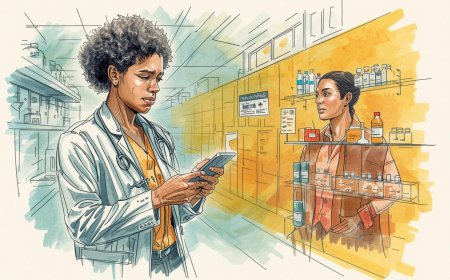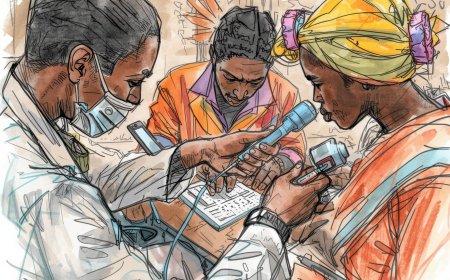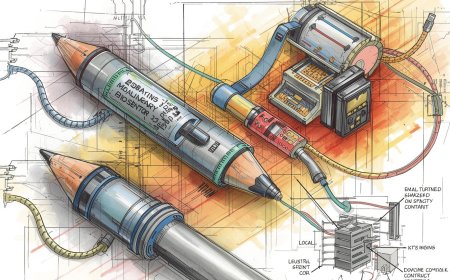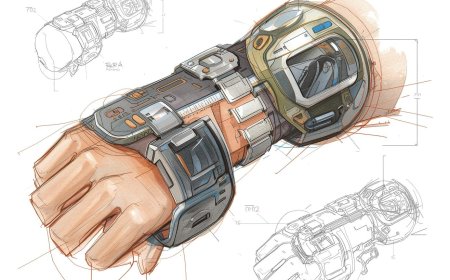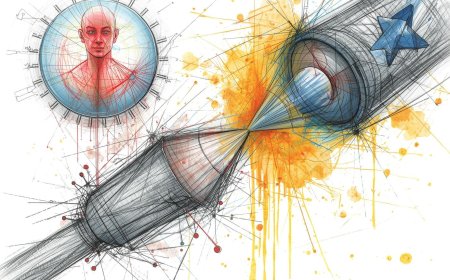Choosing an MHMIS for Your Hospital: Feature Checklist and Procurement Tips
An in-depth guide to choosing the right Medical and Health Management Information System (MHMIS) for hospitals in Africa. Learn what features to prioritize, procurement pitfalls to avoid, and how to future-proof your digital health investment. Includes African case studies, witty real-world examples, and APA-formatted citations with working links.
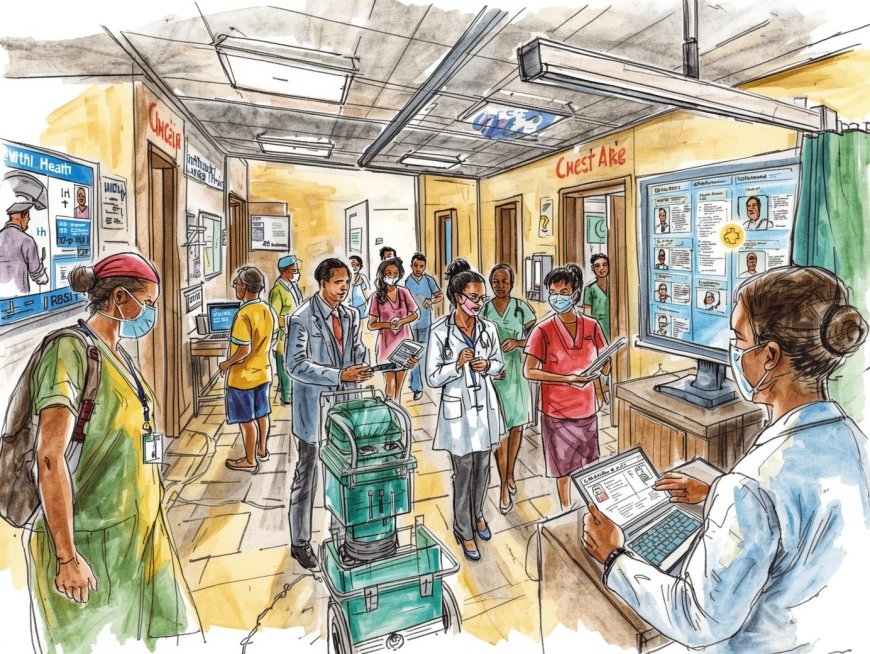
“A hospital without an MHMIS is like a pharmacy without shelves — everything’s there, but finding it is a headache.”
Across Africa, hospitals are racing to digitize. From electronic patient records and lab systems to billing and pharmacy modules, Medical and Health Management Information Systems (MHMIS) promise to improve efficiency, reduce paperwork, and enhance patient care.
But choosing the right one can feel like navigating Nairobi traffic during rush hour — plenty of options, lots of honking, and a few potholes that could swallow your entire IT budget.
This guide walks you through a practical, Africa-focused roadmap for evaluating, selecting, and procuring an MHMIS system that actually works — not just in a demo room, but in your wards, clinics, and dusty rural outposts.
1. MHMIS 101: What It Is (and Isn’t)
An MHMIS — also called a Hospital Information System (HIS) or Electronic Health Record (EHR) — integrates various hospital functions into a single digital platform. Think of it as the “brain” that connects patient registration, labs, pharmacy, radiology, finance, and reporting.
Unlike a simple EHR, which focuses on patient data, an MHMIS handles operational management — beds, billing, inventory, HR, and analytics (World Health Organization [WHO], 2024).
“An EHR tells you who is sick.
An MHMIS tells you why your hospital is broke.”
2. The African Reality: Offline Clinics, Online Dreams
Let’s be honest: most African hospitals deal with power cuts, patchy internet, and overworked staff who still prefer pen and paper “just in case.”
That’s why the best MHMIS for African contexts must be:
-
Offline-first, with automatic sync when the internet returns.
-
Modular, so hospitals can add features gradually.
-
Affordable, both upfront and in maintenance.
-
Customizable, to fit national health reporting needs (like DHIS2 or OpenMRS integration).
3. Real-World Anecdote: The Great Procurement Fiasco
A county hospital in Kenya once bought a shiny imported MHMIS for $200,000. It had a voice-activated AI chatbot — but couldn’t generate a basic NHIF claim. Within six months, the system was abandoned. The IT officer joked,
“We bought a Tesla, but what we needed was a tuk-tuk.”
Lesson learned: flashy features don’t equal functional systems.
4. Core Feature Checklist
When evaluating an MHMIS, don’t be dazzled by buzzwords. Use this feature checklist as your non-negotiable guide:
| Category | Must-Have Features | Why It Matters |
|---|---|---|
| Patient Management | Registration, queue management, triage notes | Reduces bottlenecks in OPD |
| Clinical Records (EHR) | SOAP notes, allergies, diagnosis coding (ICD-10) | Improves continuity of care |
| Laboratory & Radiology | Test ordering, results, alerts | Cuts turnaround time |
| Pharmacy | Stock tracking, dispensing, expiry alerts | Prevents drug shortages |
| Billing & Finance | NHIF claim generation, insurance modules | Ensures timely reimbursement |
| Reporting & Analytics | Custom dashboards, DHIS2 export | Supports data-driven decisions |
| User Management | Role-based access, audit trails | Protects patient confidentiality |
| Interoperability | HL7 / FHIR standards, OpenMRS sync | Enables integration |
| Offline Capability | Local caching, auto-sync | Works in low-connectivity zones |
| Support & Maintenance | 24/7 helpdesk, local technicians | Ensures uptime and continuity |
5. Local vs. International Vendors
Option A: Local MHMIS Providers
Pros:
-
Understand national workflows (NHIF, NHI, etc.)
-
Offer on-site support and training
-
Easier customization
Cons:
-
Limited scalability or advanced features
Examples:
-
Baobab Health Trust (Malawi) – https://baobabhealth.org/
-
MicroClinic Technologies (Kenya) – https://www.microclinictech.com/
Option B: International Platforms
Pros:
-
Robust systems, global standards compliance
-
Strong security and backup frameworks
Cons:
-
High cost, limited local support
-
Customization challenges
Examples:
-
OpenMRS (Global open-source EHR) – https://openmrs.org/
-
Bahmni (India/Africa open-source HIS) – https://www.bahmni.org/
-
District Health Information Software (DHIS2) – https://dhis2.org/
The sweet spot? A hybrid approach — local customization on a proven open-source backbone.
6. Procurement Tips: Avoiding “Digital White Elephants”
🧩 1. Start with a needs assessment
List your hospital’s pain points first. Don’t start with vendors; start with your workflows.
💰 2. Budget beyond software
Allocate funds for training, hardware (servers, tablets), and internet. A $50,000 system without power backup is a ticking time bomb.
📋 3. Pilot before you pay in full
Run a 3–6 month pilot in one department. Test real use cases — not just the demo.
🤝 4. Involve end users early
Doctors, nurses, and records officers will live in the system daily. Their feedback can make or break adoption.
📄 5. Ensure data ownership and exit clauses
Your hospital should own its data. Insist on clear Service Level Agreements (SLAs) that define uptime, data backups, and migration rights.
🔐 6. Prioritize data privacy
Ensure the MHMIS complies with local laws like Kenya’s Data Protection Act (2019) or Nigeria’s NDPR (National Data Protection Regulation).
7. Integration Matters: The DHIS2 Factor
Most African Ministries of Health use DHIS2 for national reporting. A system that can export data directly into DHIS2 saves countless hours.
Example: In Rwanda, Bahmni was customized to sync with DHIS2, cutting monthly reporting time by 70% (University of Rwanda, 2023).
8. Common Mistakes Hospitals Make
| Mistake | Consequence | Better Approach |
|---|---|---|
| Buying the “most expensive” system | Underutilized features | Match needs to functionality |
| Ignoring training | Staff revert to paper | Continuous hands-on coaching |
| Skipping maintenance contracts | Frequent downtime | Sign SLAs with vendors |
| Overlooking power backup | Data loss | Include solar/inverter support |
| Centralizing decisions | Staff resistance | Involve departments early |
9. Case Studies
🏥 Case 1: St. Mary’s Hospital (Uganda)
Adopted OpenMRS with local modifications for HIV data tracking. Within 12 months, reporting accuracy improved 45%.
Lesson: Open-source systems scale well with donor-funded programs.
💡 Case 2: Kiambu Level 5 Hospital (Kenya)
Implemented MicroClinic’s ZiDi system, integrating NHIF billing and lab management. Reduced outpatient wait times by 30%.
Lesson: Local vendors understand national insurance workflows.
📊 Case 3: Ghana Health Service
Integrated DHIS2 and Bahmni for maternal health tracking. Automated monthly reports cut manual data entry by half.
Lesson: Interoperability saves time and improves national alignment.
10. Future-Proofing Your Investment
-
Choose systems that support AI-ready data structures (FHIR-compatible).
-
Insist on open APIs for future integrations.
-
Plan for scalability — regional expansion, new departments, and mobile access.
-
Train internal “super users” to reduce dependence on vendors.
“An MHMIS isn’t a one-time purchase — it’s a long-term relationship. Choose wisely, or you’ll be ghosted by your software in six months.”
Conclusion: Think Long-Term, Start Small, Grow Smart
Choosing an MHMIS isn’t about the fanciest dashboard or the most foreign name. It’s about fit, functionality, and future-proofing.
Start with the essentials, scale with confidence, and always remember:
“The best system is the one your nurses actually use.”
References (APA Format with Live URLs)
Baobab Health Trust. (2024). Digital health solutions for Malawi’s hospitals. https://baobabhealth.org/
MicroClinic Technologies. (2024). ZiDi intelligent health management platform. https://www.microclinictech.com/
OpenMRS. (2024). Open-source electronic medical record platform. https://openmrs.org/
Bahmni. (2024). Open-source hospital management system. https://www.bahmni.org/
World Health Organization (WHO). (2024). Framework for national health information systems. https://www.who.int/publications/i/item/health-information-systems-framework
University of Rwanda. (2023). Case study: DHIS2 and Bahmni integration for maternal health reporting. https://ur.ac.rw/
What's Your Reaction?
 Like
0
Like
0
 Dislike
0
Dislike
0
 Love
0
Love
0
 Funny
0
Funny
0
 Angry
0
Angry
0
 Sad
0
Sad
0
 Wow
0
Wow
0









